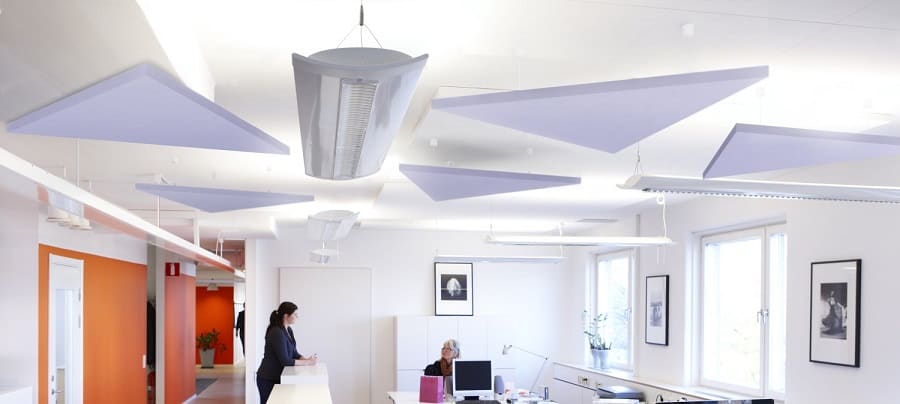
A perennial conversation during office design consultations centres on open plan office acoustics and the potential for distractions. Acoustics is often a hidden element of office design playing a major role in the comfort of an office interior yet not always on the radar for office design companies. If acoustics are addressed its often only the sound travel between rooms which is formost in the design process, whereas open plan noise levels are also controlable using suitable materials and design.
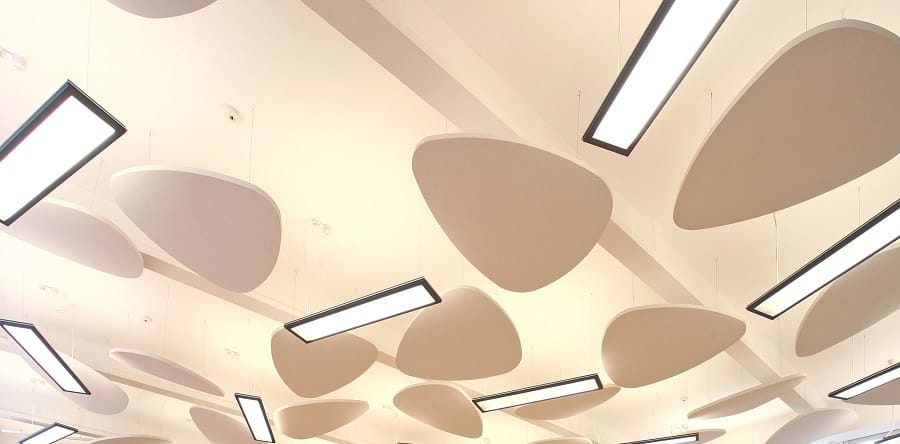
Acoustic energy has two aspects that determine the comfort level within an office as far as hearing and speaking are concerned. The quality of speech and how intelligible it is can be influenced by the background noise level. As speech is typically 20Db louder than the ambient noise level a noisy office means we have to speak with a louder voice, which is a spiral effect as the louder we speak so others must in turn raise their voices. We notice this effect most clearly in a crowded bar when the background noise level means people have to shout to be heard. Speaking loudly can be tiring as we use energy, meaning busy, noisy, offices are likely to suffer a productivity dip later in the day. As the general Db level increases our ability to hear clearly and precisely is diminished.
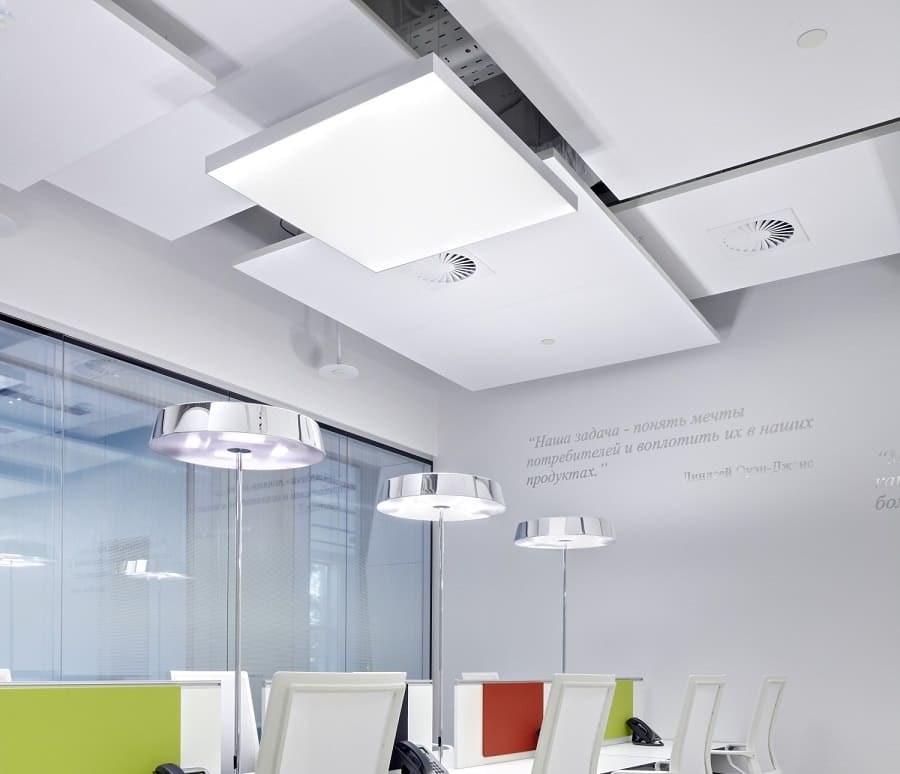
The second factor relates to speech decay and reverberation (or speech bounce). An office with the wrong acoustics will render speech harder to understand as the echo and the general background noise level dulls the clarity of sound, particularly as hearing deteriorates after the age of 35. Missing some speech, and having to concentrate harder to listen, also add to the acoustic discomfort. People put up with patchy hearing clarity thinking its just hearing loss, whereas reducing reverb and speech bounce within an office can have a notable benefit for clarity and comprehension.
In spaces where all surfaces are hard and reflective, sound waves bounce around and take longer to dissipate. These environments are called reverberant spaces, because the sound reverberates persistently for several seconds. Open offices range from high reverberation to, occasionally, extremely low reverberation (dead).
Tech solutions to background noise (overall db level and clarity / sharpness of speech) have promised to enhance the office interior but so far haven’t delivered. White noise generally adds to the overall Db level (which can be beneficial in a dead sounding space whilst clever ideas such as mirrored sound waves cannot cope with such a multi-source environment as the office.
By far the most successful solution is absorption. Common sense tells us a hard-surface interior is both noisier than a soft-furnished room, and the reverb effects in a concrete and glass building are well known.
Office design has an inbuilt advantage as furniture adsorbs sound energy and also breaks up direct sound so that its energy is broken down (decay). However as sound is measured in a logarithmic scale even a small Db reduction is actually a significant achievement. Often a 3Db – 5Db sound reduction has an audible impact, making a space much more comfortable. Intelligent office design improves acoustics compared to a ‘standard’ furnished office.
There are several routes to take for improvement in the sound absorbancy of an office design. Flooring, walls and ceilings all offer a great opportunity to improve acoustics, whilst enhancement to furniture can be beneficial using proven materials. Once only thick screens at head height could offer a baffle to sound energy but the US-style cubicle office rarely suited the confines of UK buildings.
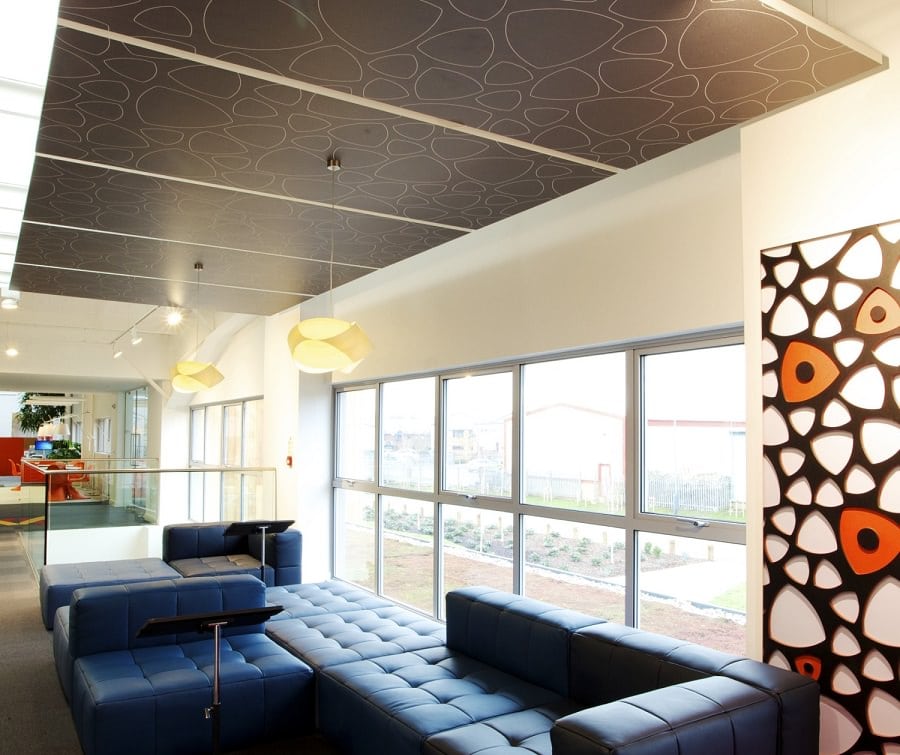
Thicker carpets using a cushioned backing are a cost effective acoustic upgrade if flooring is part of the design scope. Ceilings also have a significant role in acoustics, often not appreciated by office users. Since a good deal of sound energy goes upwards, absorption and reduced reverb are ideally treated at high level. Common types of suspended ceiling, and solid plasterboard ceilings, typically have a very poor acoustic rating. A good acoustic ceiling will be made of materials that reach the ‘A’ rating and within this there are products which have varying benefits.
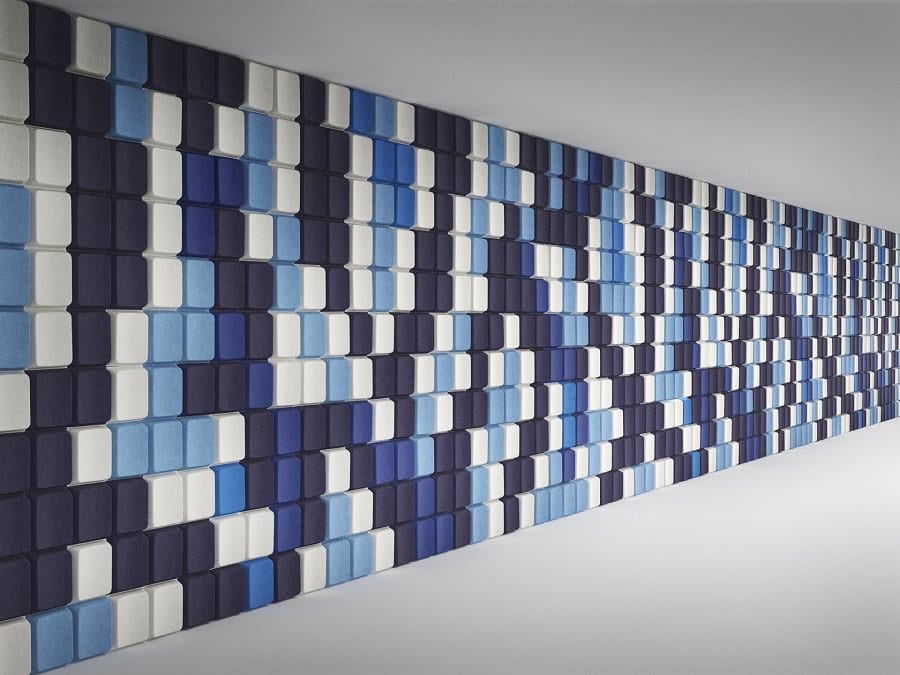
As well as suspended ceilings, dropped ‘island’ features have a worthwhile impact since they break up sound and absorp both upward and downward travelling energy. Lastly panels for walls and furniture screens are very effective, but in open glassy offices this isn’t always easy to apply. Fortunately manufacturers are understanding the visual aspects of the office interior as well as the sound performance. A good office design scheme will now consider the likely noise level using Sabine formula to calculate sound energy, and if there is a problem solutions can be incorporated upfront.
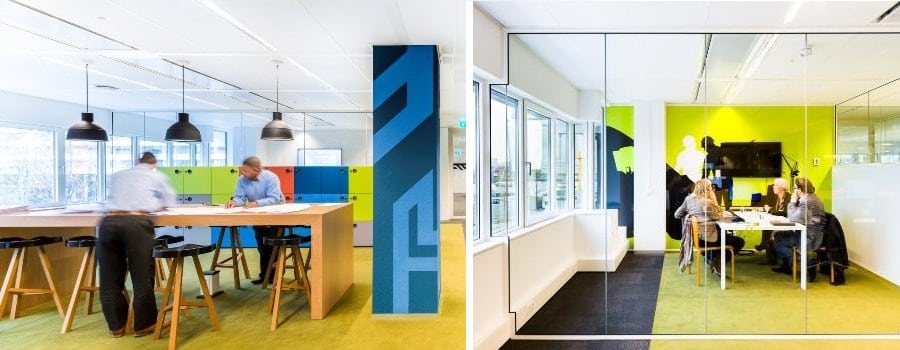
High, screened, work and meeting pods still offer a worthwhile route to achieve locally isolated concentration, meeting and quiet spots. Furniture design has responded to the need for privacy and collaboration that doesn’t disturb the surrounding space. Used in conjunction with absorbant ceilings, panels and carpets the overall comfort of the office can be greatly improved compared to a conventional open plan format, without creating the silo’s that undermine the advantages of open offices.

As with any product, claims to beneficial acoustic performance are subject to scrutiny. Even the most lacklustre products will have an acoustic performance rated within the A – E range (non-acoustic products have no rating) but the better products will have an A or B rating and may include data to illustrate performance in the crucial 125 – 4000 Hz range of the human voice.

Fusion offer expertise in office design including an understanding of acoustics. We can deploy sound level testing to determine actual noise levels and put forward solutions to improve office acoustics. Contact us for a free appraisal of the sound levels and acoustic solutions suitable for your office.